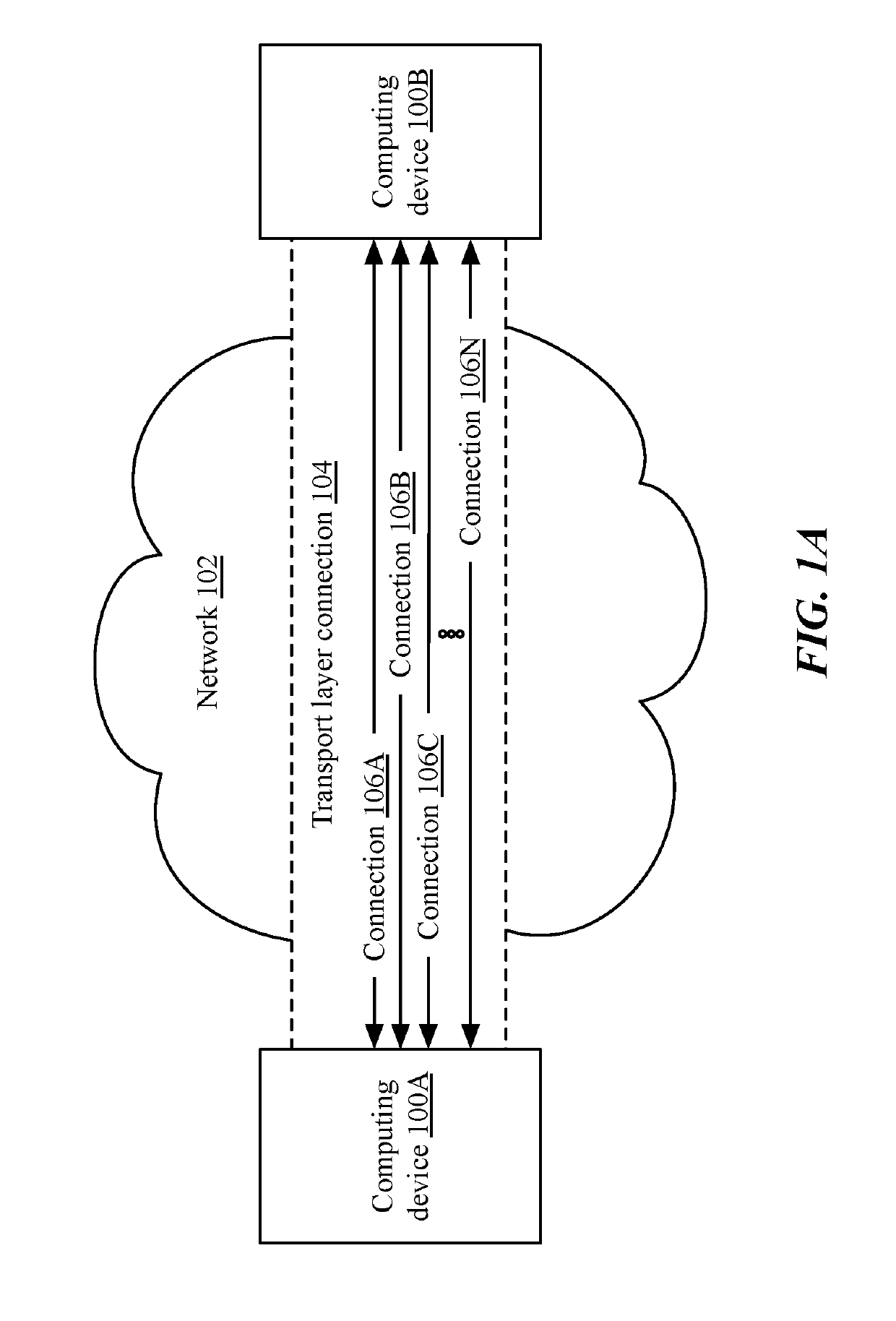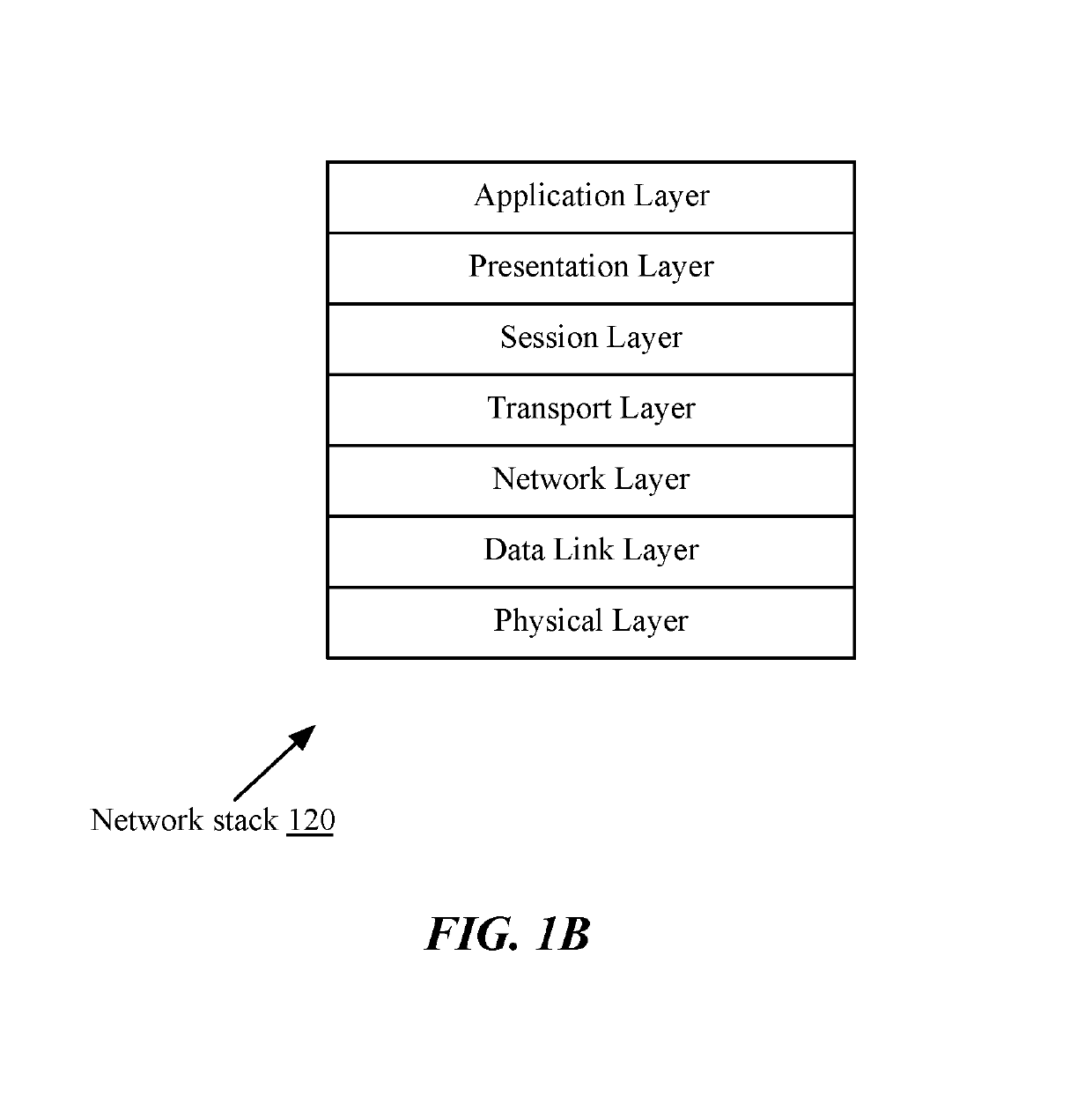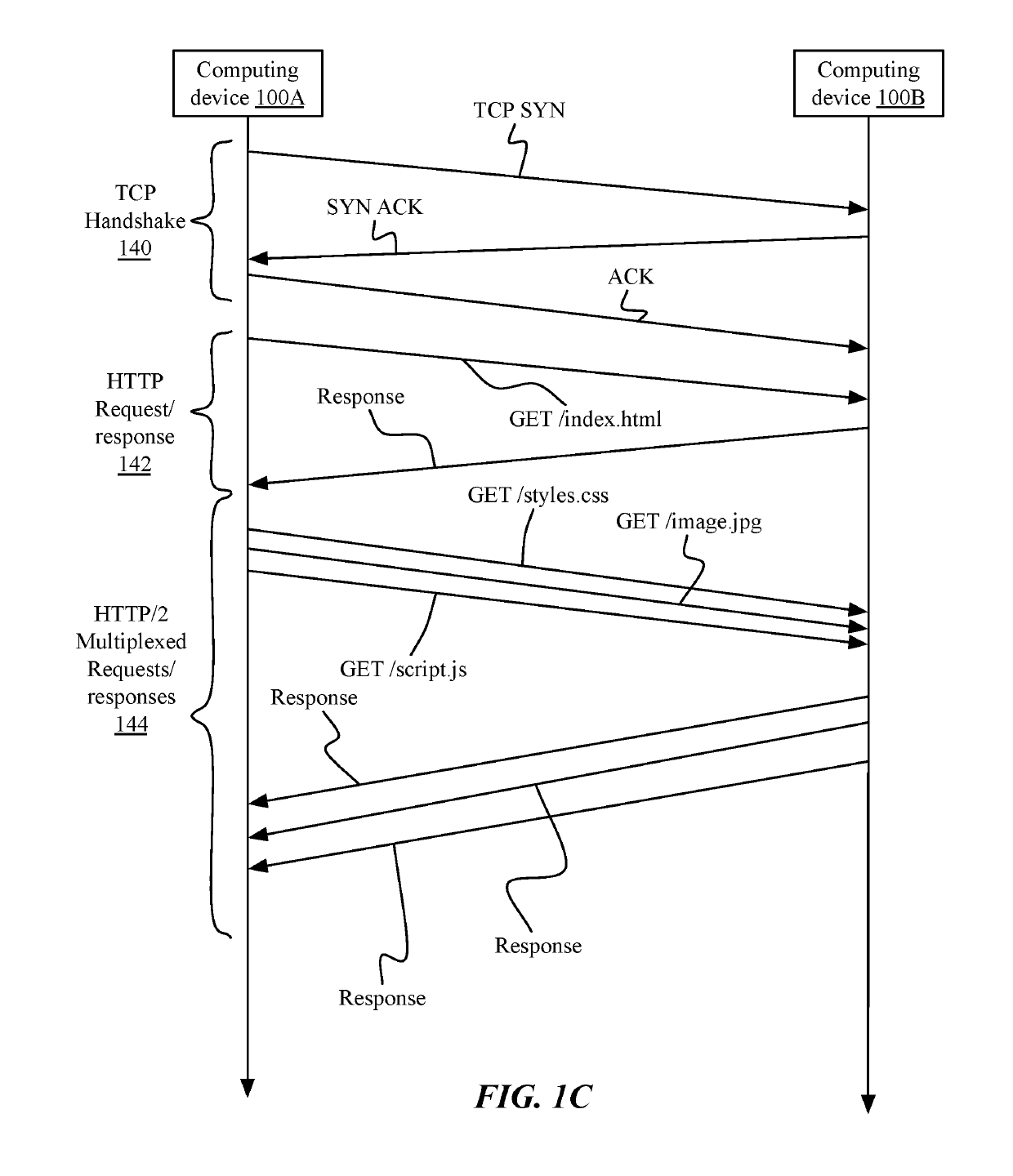Method to determine optimal number of http2.0 streams and connections for better qoe
- Summary
- Abstract
- Description
- Claims
- Application Information
AI Technical Summary
Benefits of technology
Problems solved by technology
Method used
Image
Examples
Embodiment Construction
[0019]Early versions of the HyperText Transport Protocol (HTTP) allowed only one request between computing devices to be outstanding at any one time on a given transport control protocol (TCP) connection: specifically, a response needed to be received for any request, prior to sending a subsequent request. For basic systems and web pages, this was adequate, but as the web grew in complexity with pages having embedded graphics, videos, scripts, interactive content, and other elements, requiring each request to be fulfilled prior to submitting a next request was a cause of significant delays. To address this, most web browsers or other applications would open a plurality of transport layer connections so as to transmit a plurality of concurrent HTTP requests. However, this consumes a large amount of client and server resources (e.g. TCP sockets, transmission and receive buffer memory, etc.), as well as greatly increasing overhead and reducing network efficiency. For example, if a clie...
PUM
 Login to View More
Login to View More Abstract
Description
Claims
Application Information
 Login to View More
Login to View More - R&D
- Intellectual Property
- Life Sciences
- Materials
- Tech Scout
- Unparalleled Data Quality
- Higher Quality Content
- 60% Fewer Hallucinations
Browse by: Latest US Patents, China's latest patents, Technical Efficacy Thesaurus, Application Domain, Technology Topic, Popular Technical Reports.
© 2025 PatSnap. All rights reserved.Legal|Privacy policy|Modern Slavery Act Transparency Statement|Sitemap|About US| Contact US: help@patsnap.com



